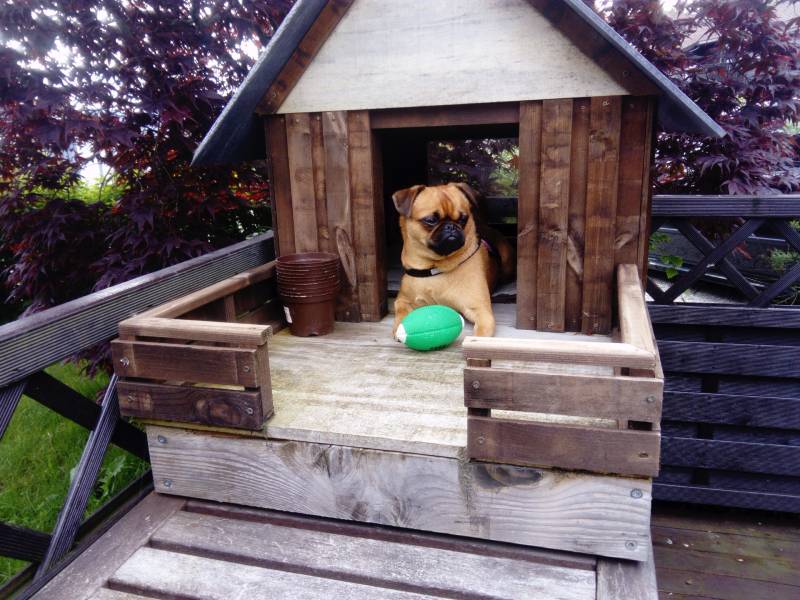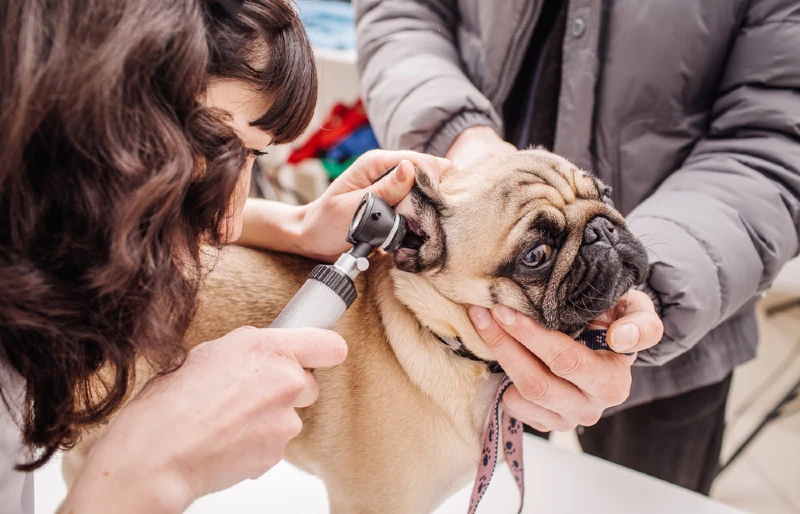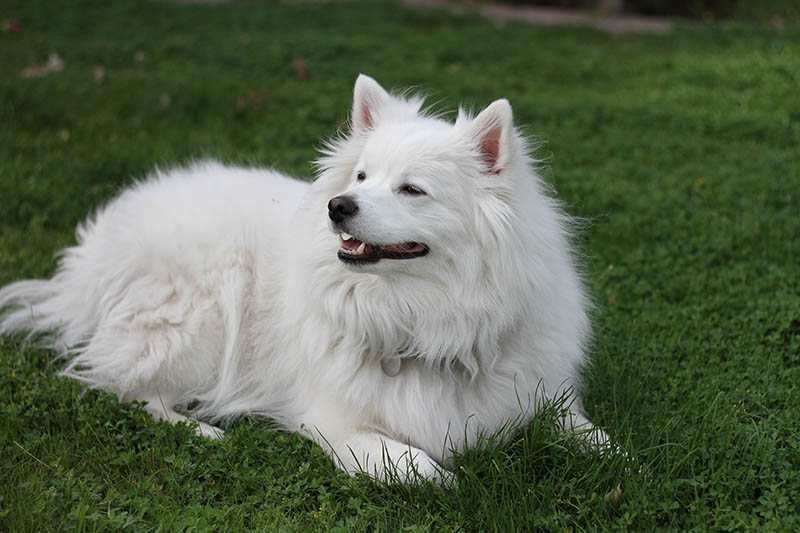10 Dog Breeds Prone to Cherry Eye: Vet Reviewed Guide & FAQ

Updated on
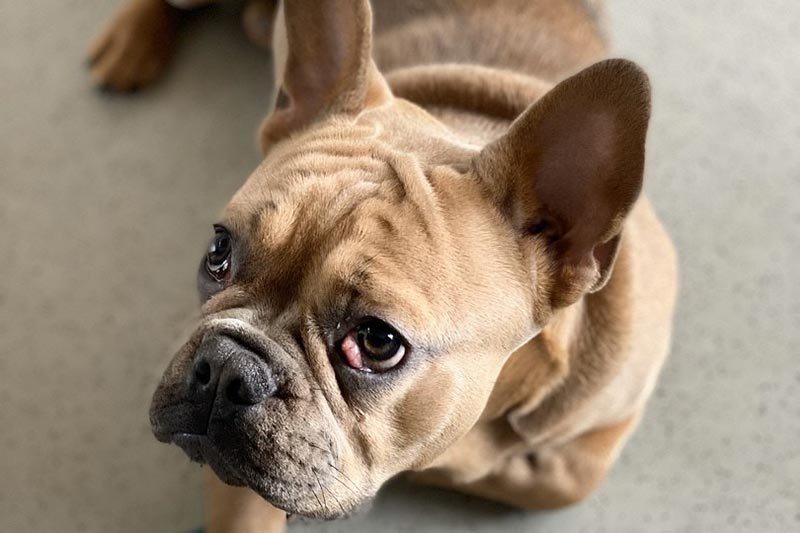
Cherry eye takes its name from the pink mass that protrudes from the inner corner of the dog’s eye but is clinically known as a prolapsed nictitating membrane gland. It is not life-threatening, and most dogs diagnosed with cherry eye go on to live happy lives. However, leaving the condition untreated can make it uncomfortable and increase the risk of complications like dry eye, conjunctivitis, and eye ulcers.
Any breed can develop cherry eye, but according to recent research from the Royal Veterinary College,1 flat-faced, brachycephalic breeds are up to 34 times more likely to get the condition. If you are looking to adopt a dog or currently own a dog that is prone to cherry eye, you should know what to look out for so you can seek the necessary treatment.
In this article, we’ll examine 10 dog breeds prone to cherry eye and how you can spot the signs of the condition.
The 10 Dog Breeds Prone to Cherry Eye
1. English Bulldog
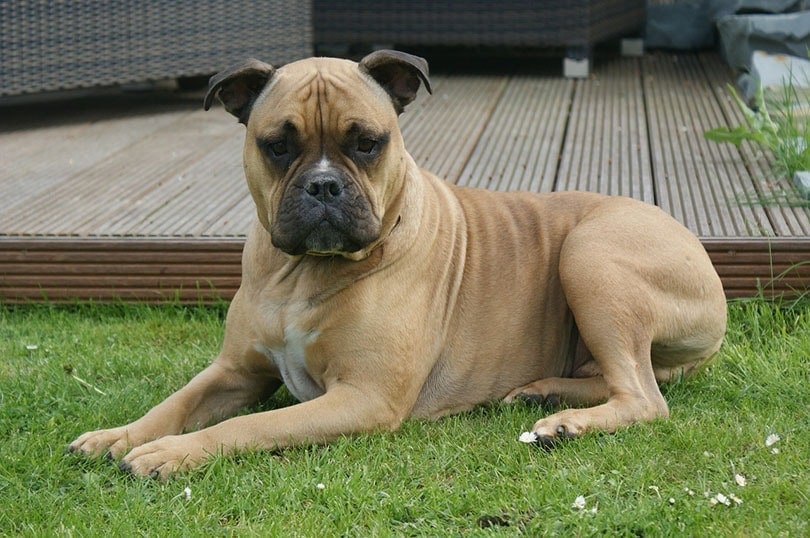
| Height | 14–15 inches |
| Weight | 40–50 pounds |
| Lifespan | 8–10 years |
| Temperament | Friendly, brave, loyal |
Bulldogs are brachycephalic dogs that are prone to cherry eye and many other health concerns.2 Along with cherry eye, their broad skulls and flat faces make breathing more of a challenge, so exercise needs to be supervised. They are also not great swimmers because of their heavy heads and should be watched closely around water. They are also more prone to skin fold dermatitis, undershot jaws, interdigital cysts, entropion and dry eye. It is highly recommended to have health insurance for English Bulldogs.
Bulldogs are usually friendly and courageous, and their goofy nature makes them even more lovable. They are a popular family pet due to their low exercise needs. However the breed is sadly prone to many significant health problems such as BOAS, brachycephalic obstructive airway syndrome. Veterinarians are helping to guide responsible breeders on improving the health of the breed.
2. Puggle

| Height | 13–15 inches |
| Weight | 18–30 pounds |
| Lifespan | 10–15 years |
| Temperament | Friendly, sociable, intelligent, playful, affectionate, sometimes stubborn |
The Puggle is a cross between a Beagle and a Pug. They inherited the wrinkles and muzzle of the Pug, with the tail and floppy ears from the Beagle. Beagles are generally active dogs, so your Puggle will be too, but you will need to monitor its exercise because of its Pug-like snout. They are considered a family pet; the Puggle gets along with most people and children and is very playful and affectionate. They can have health concerns from either of their parent breeds such as BOAS, luxating kneecaps, undershot jaws and possibly Pug encephalitis.
Puggles are smart, making them trainable, but they may not be so eager to please, so they can be a bit stubborn.
3. Neapolitan Mastiffs
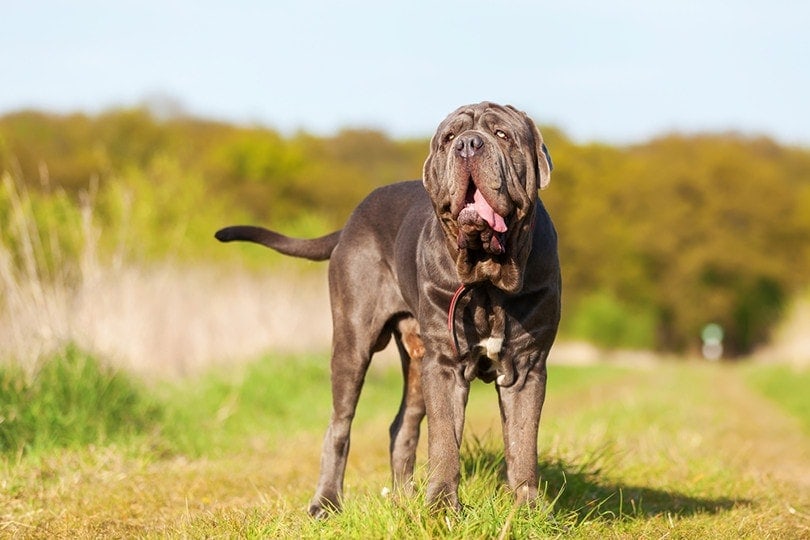
| Height | 24–31 inches |
| Weight | 110–150 pounds |
| Lifespan | 7–9 years |
| Temperament | Territorial, confident, loyal, intelligent, affectionate |
It is very common to see cherry eye in the Neapolitan Mastiff (around 5%), but if you are looking for a guard dog and a companion, a Neapolitan Mastiff may be a good fit. However, they are not suitable for first-time owners or families with young children. They were originally bred as guard dogs and have the temperament to be just that. They are prone to additional health problems such as hip and elbow dysplasia and dilated cardiomyopathy.
They can be territorial and protective but highly devoted and trusting of their family. However, they have moderate energy levels and are relatively quiet dogs. They are intelligent, affectionate, and devoted companions when given strong leadership.
4. Lhasa Apso
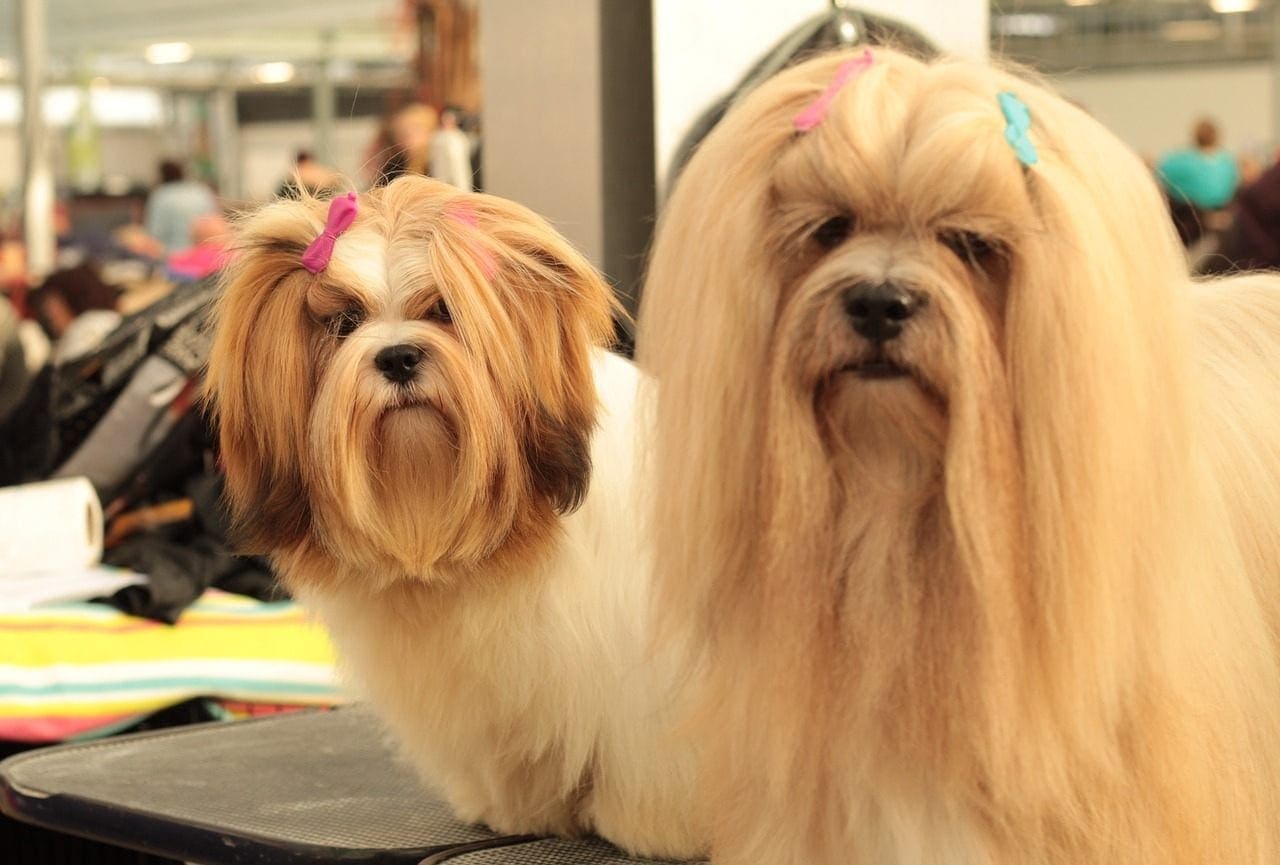
| Height | 10-11 inches |
| Weight | 12–18 pounds |
| Lifespan | 12–15 years |
| Temperament | Affectionate, independent, playful, mischievous, aloof, stubborn |
Lhasa Apsos make great companions, but because they were once bred to be guard dogs, they can also be stubborn and protective, alerting you with their loud and sharp bark. They get along well with new pet parents and can adapt to almost any home, including apartments.
They are more likely to develop conditions of hip dysplasia, dry eye, disc disease, progressive retinal atrophy and juvenile kidney disease.
Lhasa Apsos are also confident and stubborn, so they may test your leadership if you don’t follow a consistent and strict training routine. Their looks are adorable, and the time and patience you invest in them will be well worth the effort.
5. American Cocker Spaniel
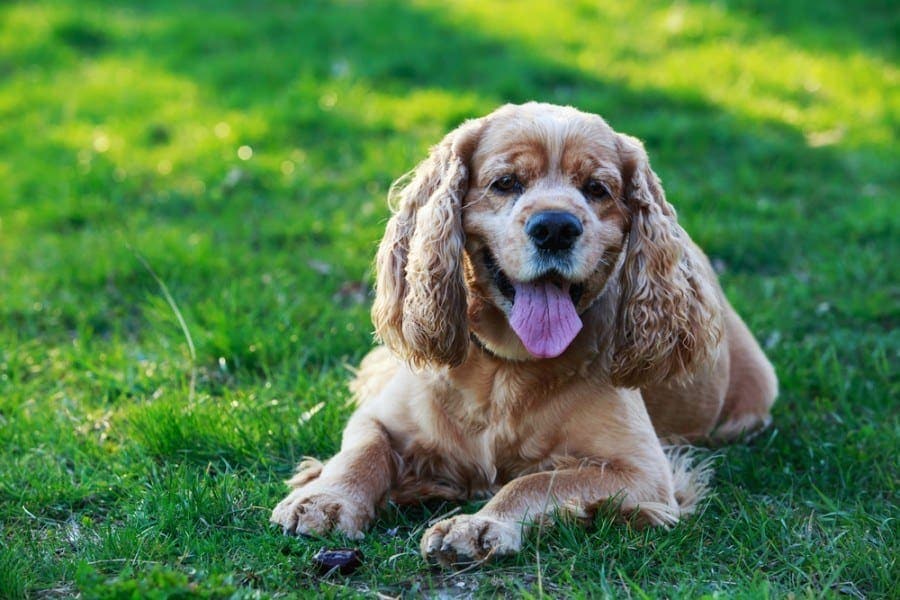
| Height | 13.5–15.5 inches |
| Weight | 20–30 pounds |
| Lifespan | 10–14 years |
| Temperament | Friendly, affectionate, gentle, playful, sweet-natured |
The American Cocker Spaniel is an affectionate family companion. They have gorgeous coats but require intensive grooming to stay that way. Their companionship works both ways as they are eager to please and will love to snuggle with you as much as you love to snuggle with them.
You will need to keep a watch out for signs of hip and elbow dysplasia, eye, ear and skin problems.
Cocker Spaniels are sweet, calm dogs, making it no surprise that they are a pleasure to own. Sadly, their gorgeous puppy dog eyes are prone to cherry eye.
6. Jug
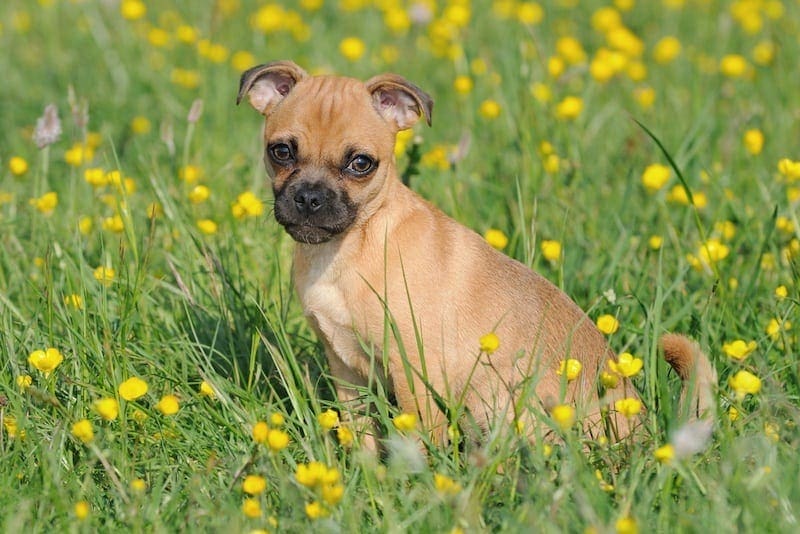
| Height | 11–13 inches |
| Weight | 13–18 pounds |
| Lifespan | 12–15 years |
| Temperament | Energetic, affectionate, smart, sociable, mischievous |
The Jug is a cross between a Jack Russel and a Pug, which has become very popular in the last 10 years. Both these breeds are very different in appearance and temperament, so their hybrid puppies will all be unique, even siblings within the same litter. To minimize the breathing issues that pugs are known for, they are bred to maintain the basic features of a pug with a slightly longer nose.
They can have the genetic propensity towards developing health conditions from either of their parent breeds. These include luxating kneecaps, undershot jaw, skin allergies and eye problems.
The jug is affectionate, friendly, outgoing, and energetic. They have a kind nature and will make good pets for families and first-time owners. They are also brachycephalic dogs, like the Puggle, which is why they are more prone to cherry eye and other health problems.
7. Great Dane
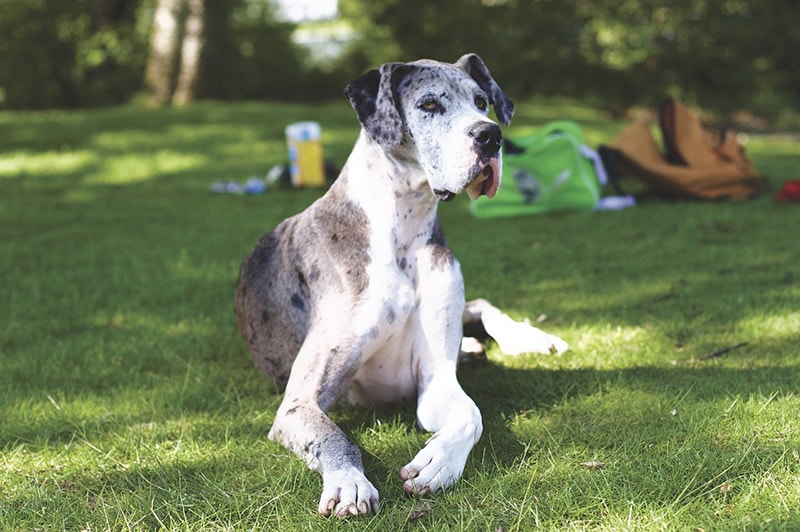
| Height | 28–32 inches |
| Weight | 110–175 pounds |
| Lifespan | 7–10 years |
| Temperament | Playful, affectionate, shy, laid back |
The Great Dane is a noble breed; their appearance may be intimidating, but they are often referred to as gentle giants. While they were originally bred for hunting, they’re hunting instincts are less apparent, and they’re primarily adopted as companion pets.
Amongst the more common health complaints they may develop are wobblers disease, hip dysplasia, bloat and cardiomyopathy.
Great Danes are gentle souls that make great family companions and get along well with all types of families and other pets. They are very eager to please, which makes them easy to train, and their size and powerful bark will be enough to deter any unwanted visitor.
8. Pekingese
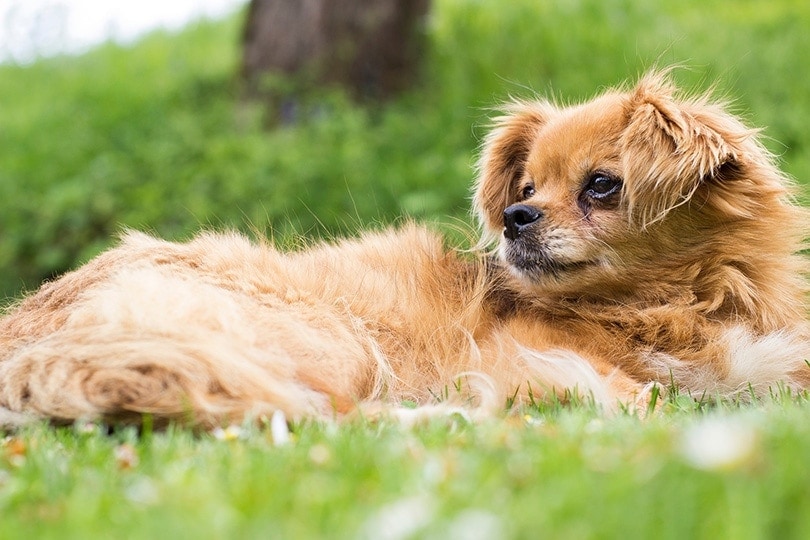
| Height | 6–9 inches |
| Weight | 6–14 pounds |
| Lifespan | 12–14 years |
| Temperament | Friendly, loving, affectionate, intelligent, confident, brave |
The Pekingese is a toy breed, loved for its almost flawless coat that hangs long, soft, and straight. Along with their adorable looks, they are friendly, loving, and affectionate and love to be alongside their humans as they thrive on attention. Don’t be too fooled by their size since they can be very alert mini watchdogs with a bark that is much bigger than their size.
Their brachycephalic skulls make them more susceptible to breathing problems and eye problems. Also on the list of health problems can be pyloric stenosis, Legg-Calve- Perthes disease and retained testicles.
These charming little dogs are suited to families who long for loving lap dogs and have plenty of time to invest in grooming. You will need to watch for signs of cherry Eye with this breed.
9. Bloodhound
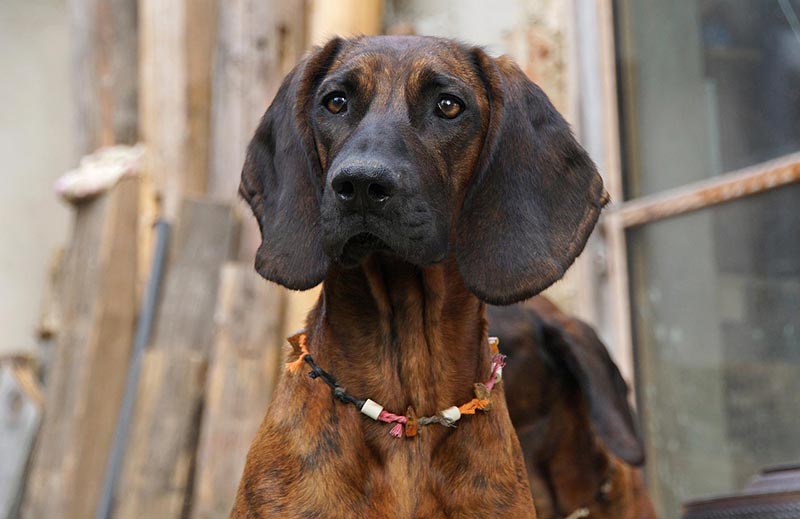
| Height | 23–27 inches |
| Weight | 80–110 pounds |
| Lifespan | 10–12 years |
| Temperament | Friendly, independent, inquisitive |
Bloodhounds are notorious for their appearance made up of loose skin and wrinkles, drooping ears, and deep-set, captivating eyes. They have a gentle and patient nature and are great family pets that get along with other animals, especially children.
Health issues to be on the lookout for include hip dysplasia, cataracts, entropion and fold dermatitis.
While they are sweet and gentle, they are also independent and determined. This independent nature may require more patience with training as they have a mind of their own, especially when following their noses.
10. Shih Tzu
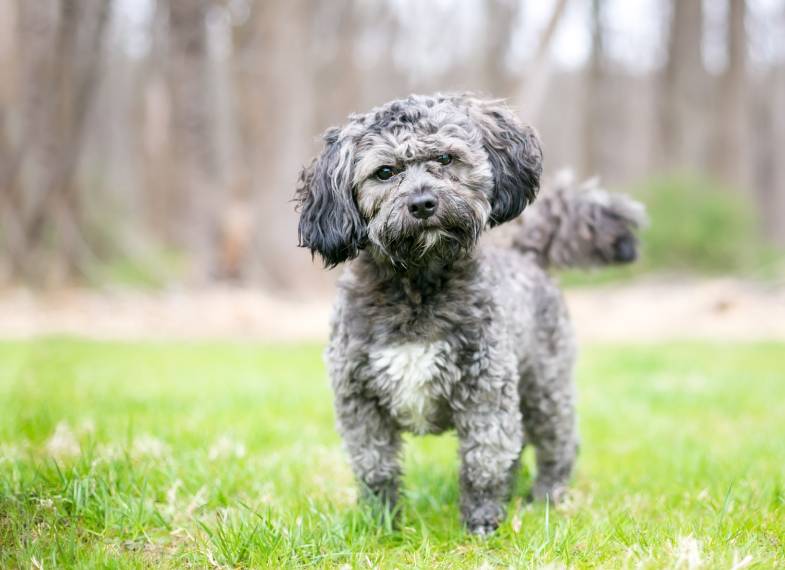
| Height | 8–11 inches |
| Weight | 9–16 pounds |
| Lifespan | 11–14 years |
| Temperament | Happy, affectionate, outgoing, playful, |
These little dogs are as unique as their name. They are notorious lap dogs that will gladly perch on your lap most of the day like royalty. They are happy and playful and require a lot of attention.
As well as cherry eye they are at increased risk of patellar luxation, arachnoid cysts, entropion and fold dermatitis.
Along with their affectionate and happy nature, their adorable faces and regal coats make them very popular. Their coat is long and luscious and comes in 14 colors, so they are bound to turn heads.
What Are the Symptoms of Cherry Eye?
A round, red, or pink mass bulging in the eye’s lower inner corner is the telltale sign of cherry eye. Here are some more signs to look out for that may indicate your dog is developing cherry eye:
- Discharge from the eye
- Inflammation of the conjunctiva
- Redness
- Pawing at the eye
- Red mass in the corner of the eye
It is helpful to know that the cherry eye is usually uncomfortable for your dog. It should not be left untreated as it can lead to further issues such as ulcers and chronically dry eyes, which may cause further discomfort.
Is It Possible to Prevent Cherry Eye?
Unfortunately, there is no way to prevent your dog from developing cherry eye, but just because they are predisposed to the condition doesn’t mean they will definitely end up with it. Cherry eye is thought to be caused by loose connecting ligaments holding the third eyelid gland in place. The best things you can do for your dog are to provide a good-quality, well-balanced diet, lots of exercise to maintain a healthy weight, and plenty of love. When looking for a short faced puppy look for those with longer noses and open nostrils to reduce the risk of breathing problems. Keep up with vet checkups and check in with your vet as soon as something seems out of the ordinary.
Conclusion
While most breeds of dogs are prone to cherry eye, some have a higher chance, such as brachycephalic dogs. A dog can live a happy and healthy life after cherry eye treatment. It requires treatment to prevent secondary issues, so it is vital to know the signs of cherry eye and get to your vet as soon as you notice any eye issues.
See also: Beagle Cherry Eye: Signs, Causes & Care (Vet Answer)
Featured Image Credit: Mylene2401, Pixabay



